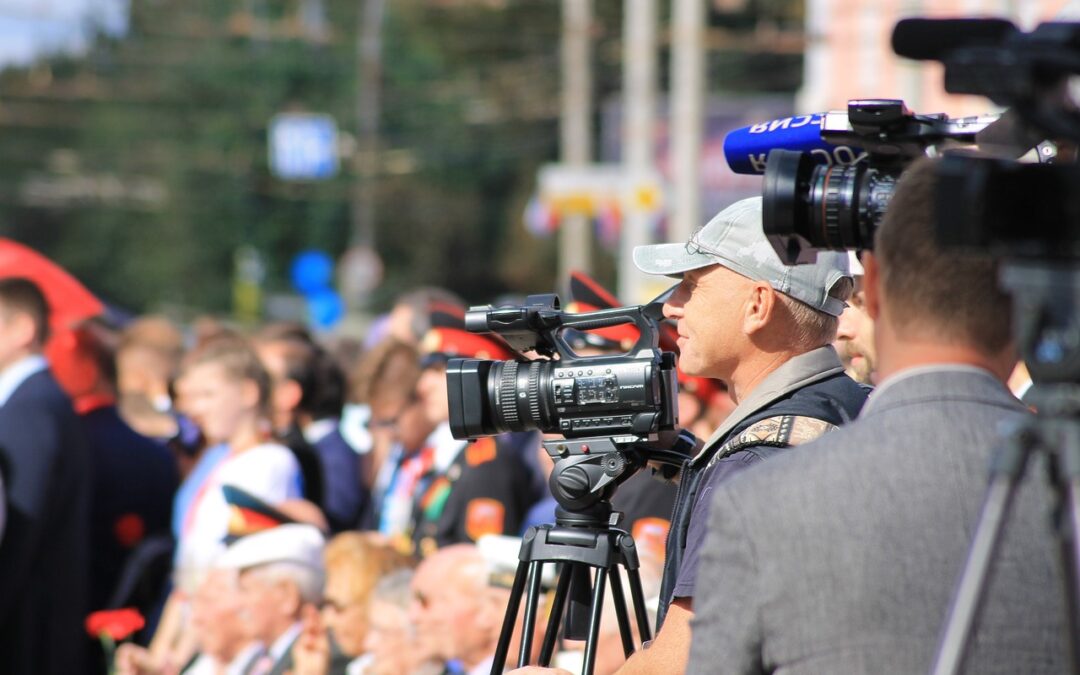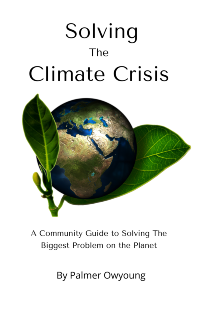After a U.S. mass shooting, you often hear community leaders and politicians calling for “Thoughts and prayers,” while offering scant solutions to what has become an epidemic in the country. While there is no single solution on how to prevent mass shootings in the United States science can play a crucial role in identifying the causes of these tragedies and help to prevent future ones from occurring.
Mass Shootings in the US On the Rise
Unfortunately, gun violence is a fixture of living in the United States. As of June 19, 2023, there have been 316 mass shootings, defined as an incident in which four or more people are injured or killed, not including the shooter.
Since 2014, the number of U.S. mass shootings has risen from 273 to a peak of 690 in 2021. In the same year, they hit an all-time high of 48,830 deaths from gun violence, or about 1 death every 11 minutes. However, not all these deaths came from mass shootings. In fact, out of the average 40,000 gun deaths per year in the U.S., mass shootings represent less than 1% of them. Most of these are suicides followed by homicides and over 3,500 of these casualties are kids or teens.
Murders in America vs. The World
Violence in America peaked in 1991 when it hit 9.7 homicides per 100,000 people and dropped precipitously to hit a low of 4.44 per 100,000 in 2014, and has risen sharply since then to 6.52 deaths per 100,000 in 2020.
To give you some perspective, while the homicide rate in America is high for a wealthy country, it doesn’t even put it in the top 10 for the world. The U.S. ranks about 49. The number 1 spot belongs to El Salvador with 62 deaths per 100,000 people. There are 5.61 per 100,000, as a global average, which the U.S. was below until 2020. Where the U.S. really stumbles is its comparison against OECD countries, which have an average homicide rate of 2.6 per 100,000 and two-thirds of member countries have a death rate under 1 per 100,000. This means that the U.S. homicide rate is about 2.5 times the OECD average.
Gun Deaths in the United States vs. The World
However, the numbers above are homicides, not gun deaths. Per capita the U.S. has the 32nd-highest rate of deaths from gun violence in the world: 3.96 deaths per 100,000 people in 2019. That was over eight times as high as the rate in Canada, which had 0.47 deaths per 100,000 people — and nearly 100 times higher than the one in the United Kingdom, which had 0.04 deaths per 100,000. El Salvador has the highest number of gun deaths, with 36.78 deaths per 100,000.
If you consider gun deaths from all causes in the U.S. (including suicide) the number of deaths jumps to 12.09 per 100,000.
In 2019, the U.S. also had the dubious honor of being number 2 for countries with the highest number of total gun deaths, with 37,038, behind Brazil, which had 49,436.
From 2019 to 2022, the number of gun-related deaths went from 33,599 to 44,290. A 31% increase in 3 years! And 9 of the 10 deadliest mass shootings in the country’s history have taken place since 2007.
Why is Gun Violence Rising?
So, what’s behind this precipitous rise in gun violence in the U.S.?
According to Jonathan Jay, a professor of public health from Boston University, the violence is concentrated in neighborhoods with high rates of economic deprivation, trauma associated with past violence, and poor access to resources. Communities where people of color, especially black people, live. Jay says that this violence at least partially stems from the decades of public policy that overtly and covertly aimed to maintain white dominance.
He also identifies police violence as a motive for why more young people are carrying weapons today. Gun ownership is also on the rise. U.S. gun sales reached a record 23 million in 2020 – a 65% increase from 2019 – and remained high in 2021.
It’s not a coincidence this happened during the COVID-19 pandemic. According to Josh Horwitz, co-director of the Johns Hopkins Center for Gun Violence Solutions, the rise in gun purchases is linked to “the idea that guns keep us safe, especially in uncertain times.”
A 2023 report released by the US Secret Service that analyzed 173 mass casualty events also revealed that increased levels of stress could also contribute to the rise in mass shootings. In nearly 93% of cases, the assailants had dealt with a personal issue prior to their attack, whether it be divorce, health problems, or issues at school or work. Nearly all mass shooters (around 98%) are male, which has led some researchers to conclude that there is a connection between the toxic masculine culture and gun violence.
But then again, there are other countries in the world where people have stress and toxic masculinity exists and they don’t go around shooting each other nearly as often as Americans do.
It is the Guns Stupid
One of the greatest drivers of gun violence in America is simply the wide availability of guns. According to a Swiss research project called the Small Arms Survey, as of 2018, the ratio of firearms per 100 residents in the U.S. is 120 up from 88 per 100 in 2011. Remember this survey was done pre-pandemic, before the surge in gun buying.
This gives America the dubious honor of having more guns per capita than any other country in the world. The second country is Yemen, which has 53 guns per 100 citizens, less than half of what the U.S. has.
However, high gun ownership alone doesn’t explain the violence in America. Switzerland per capita has 27 guns per 100, a far cry from the number in the United States, but high for Europe. However, the number of mass shootings is low, almost non-existent. The last one was in 2001. The Swiss have 2.64 gun deaths (from all causes) per 100,000 compared to America’s 12.09.
The difference could be in how guns are issued in Switzerland compared to the U.S. Switzerland has mandatory military service for men, and women can volunteer. As a result, all men and some women are highly trained in how to use their firearms.
In many U.S. states, you can purchase a gun with no training. You just have to submit to a background check. However, there are even loopholes for this. For example, you can make a purchase at a gun show from an individual or a secondhand gun without one.
Canada also has a relatively high level of gun ownership, with about 35 guns per 100 people (less than one-third the number in the U.S.). But compared to the United States, it has very few gun deaths. The U.S. has a population 9 times the size of Canada, but its gun-related deaths (from all causes) are over 56 times Canada’s.
Solutions to Mass Shootings in America
So, what are some solutions to curb gun deaths according to science? Daniel Webster, co-director of the Johns Hopkins Center for Gun Violence Solutions, says there are two policies that would have significant effects in lowering rates of mass shootings.
The first is a national law requiring that gun purchasers go through a licensing process in which they must engage with law enforcement and are given safety training.
The second approach that reduces deaths from mass shootings is having bans on buying large-capacity magazines or ammunition-feeding devices for semi-automatic weapons.
This restricts the number of bullets a shooter can fire in a short amount of time, which could allow victims to flee or fight back.
Another study by David Hemenway, director of the Harvard Injury Control Research Center, supports this. Hemenway worked with colleagues to examine the effect of banning large-capacity magazines on almost three decades of mass shootings in different states.
The states which had bans had fewer mass shootings, and the ones that occurred were much less lethal, according to Hemenway.
According to Webster, another approach could be keeping guns away from young people, through safer storage of firearms and age restrictions on purchases.
Although this has not been studied much, it would presumably have a preventative effect, since the data shows that the peak age for violent offending with firearms is between 18 to 21.
Then there is recognizing the signs of someone who is preparing to harm others. According to Jillian Peterson, the co-author of a book called The Violence Project, about how to stop mass shootings, half of all mass shooters—and nearly 80% of school mass shooters—communicate their motives ahead of time. They post threats on social media or tell their family and friends. This can create an opportunity for intervention. Peterson suggests behavioral intervention and threat assessment teams to train people in schools, workplaces, and communities to proactively respond to warning signs before a shooter picks up a gun.
The Media and Mass Shootings
One of the most important ways to reduce mass shootings could be to change how much coverage the media gives them. A 2013 study by epidemiologists and social scientists has found that violence can be contagious and spread similar to the way an infectious disease might. In 2015, a team of researchers found that this contagion effect is also prevalent in mass shootings and school shootings and another is more likely to occur in the two weeks after a shooting.
In a 2018 study by Jay Walker, an economics professor at Old Dominion University, and economist, Michael Jetter said,
“Our findings consistently suggest a positive and statistically significant effect of coverage on the number of subsequent shootings, lasting for 4-10 days. At its mean, news coverage is suggested to cause approximately three mass shootings in the following week, which would explain 55 percent of all mass shootings in our sample.”
In their study, they examined the causal relationships between television news coverage and mass shootings and compared it to the occurrence of natural disasters. What they found was that news media coverage of shootings decreased during natural disasters and there were fewer shootings the following week.
Because they did not study the composition of news coverage of mass shootings, only the amount they could not offer any recommendations for how to change coverage, but one suggestion they made was not to over-saturate mass shootings with too much coverage.
Another reason to limit the coverage of mass shootings is that, despite their notoriety, they are still relatively rare. On average, around ten students a year are killed in school shootings, out of the 56 million students who attend public and private primary and secondary education schools. More children every year are killed in bicycle accidents and pool drownings than in school shootings. Out of the average 40,000 gun deaths per year in the U.S. mass shootings represent less than 1% of them.
A Mass Shooter’s Motivation for Fame
Some experts have hypothesized that one motivation might be fame. According to Nicole Smith Dahmen, a journalism professor at the University of Oregon who studies visual representation in media, “When it comes to covering mass shootings and gun violence, we want to emphasize the victims, we want to tell the stories of the community, and recovery, and resilience, rather than focusing on the perpetrator.”
Dahmen says that intensely profiling mass shooters could inspire more of them because potential shooters will see violence to quickly gain fame.
In 2017, an organization named Suicide Awareness Voices of Education (SAVE) put out comprehensive guidelines for how to report mass shootings for the media. It offers advice on how to minimize copycat behavior by other potential shooters.
For example, it says to not use the perpetrator’s name very often and to only use their photo sparingly. It recommends not using imagery of weapons or uniforms, and not to sensationalize their acts of violence with hyperbole by using phrases like, “The deadliest incident since Columbine.”
Instead, SAVE suggests the media should focus on solutions and how the community is trying to recover, rather than the individual’s act of violence.
Family members of victims of mass shootings have also called for news outlets to adopt a no-notoriety approach to covering mass shootings that would restrict or limit the publication of the name, photos, and ideologies of mass shooters.
The Effects of Social Media and Mass Shootings
Social media has also been accused of fueling mass shootings by giving perpetrators a platform to express their rage and spout their ideologies, which are often reinforced by other users, and adds fuel to the fire. According to Elizabeth Skewes, a journalism professor at the University of Colorado, Boulder- “Internet culture is a part of it in that there are places that people can go to get horrible ways of thinking reinforced,”
Social Media can also have a contagion effect in the same way that regular media can, as users share videos and images of the incident and details about the perpetrator. This can give them the notoriety they crave, and lead to more copycat killings.
Although there have been calls on Social Media to crack down on hate speech and sharing information about mass shootings, they haven’t been successful in curbing the behavior.
The Internet can also give would-be perpetrators a place to research how they can carry out their own mass attacks and get access to equipment.
Conclusion
There are no simple solutions on how to prevent mass shootings in the United States. While expressing thoughts and prayers may help comfort the survivors, it does nothing to prevent the next incident from occurring.
The evidence says the best ways to keep mass shootings from happening are to have mandatory training for gun ownership, eliminate the public sale of high-capacity clips, and keep guns out of the hands of 18-21 year-old.
We can also reduce the social contagion effect, by ensuring that the media covers mass shootings responsibly and that we hold Social Media companies accountable when their users spread hate-filled messages or add to the notoriety of an incident.
In the end, America needs to wake up and decide whether its gun culture is worth more than the lives of its children and its citizens.


